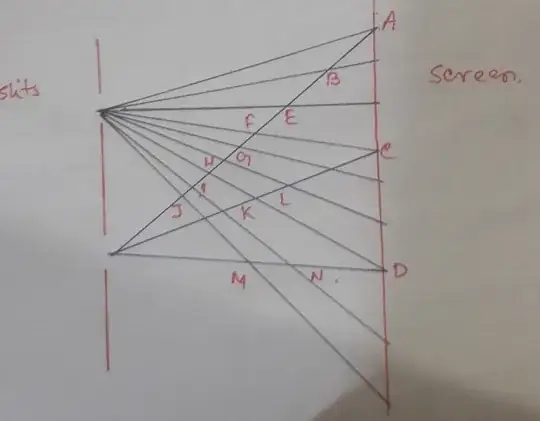In the picture above, black and blue lines are representing waves(mechanical) emerging from the slits(after diffraction). Let us consider that at point A, centre of a bright fringe is located. That means the path difference between the most upward black and blue line is an integral multiple of the wavelength of the wave. But the blue line before reaching the point A,it interacts with many blue lines. Aren't there any chance of cancellation of the wave(blue line)? Okay then for a while we consider that at point F both waves are in out of phase. Then how would this blue line reach to the point A? Shouldn't the particle at F remain static since the waves are cancelling out there?
Okay then we can again consider that somehow the wave propagates. However those interactions at point E and some other ones changes the intensity of blue line. Why do we then consider the intensity of resultant at A to be exacrly double of that of the black/blue line? Or is it just an approximation rather in reality it varies deoending on the position?
** All the waves that are represented by the black and blue lines are of same frequency and amplitude**
